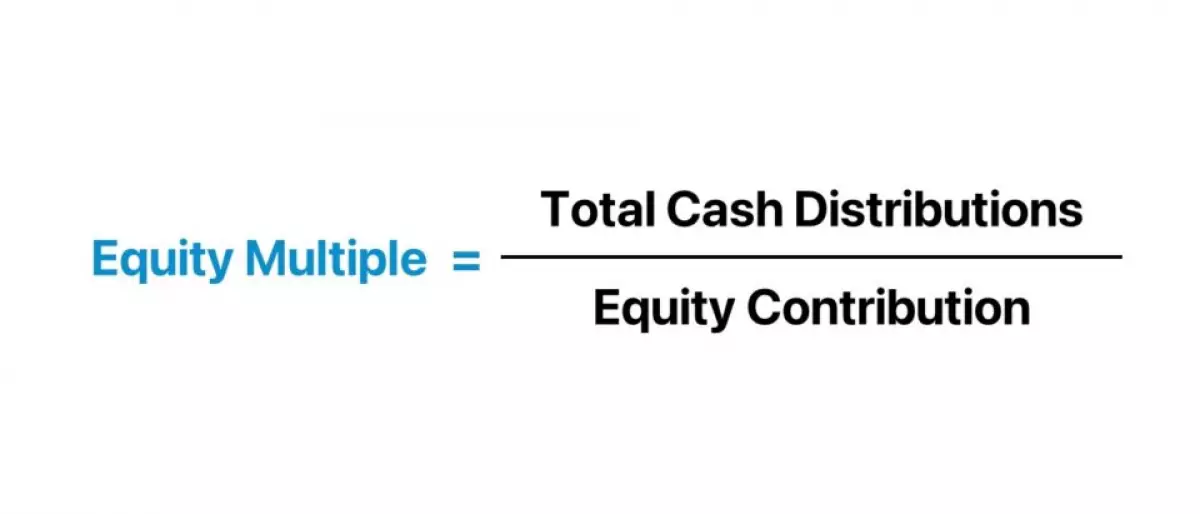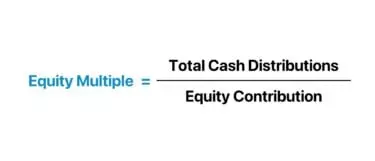
How to Calculate Equity Multiple?
The equity multiple is a key metric used in real estate investing to evaluate the profitability of a property investment. It compares the total cash distributions received by an investor to the total capital contribution in a property investment. To calculate the equity multiple, follow these steps:
- Determine the Total Equity Contribution ("Initial Outlay").
- Calculate the Sum of Cash Distributions Earned on the Investment.
- Divide the Total Cash Distributions by the Total Equity Contribution.
Equity Multiple Formula
The equity multiple formula is simple: it is the ratio between the total cash distributions and the total equity invested. It can be expressed as follows:
Equity Multiple = Total Cash Distribution / Total Equity ContributionKeep in mind that the equity multiple is an absolute figure, so it should not be the sole factor in making investment decisions. It should be used in conjunction with other metrics to fully understand the potential returns and risks of a property investment.
Equity Multiple vs. IRR: What is the Difference?
While the equity multiple is a useful metric, it has limitations. It does not consider the time value of money (TVM) and can distort returns in certain scenarios. This is where the Internal Rate of Return (IRR) comes into play. Here's a comparison:
- Equity Multiple: It represents the number of times the initial investment is expected to be returned over the project ("turns").
- Internal Rate of Return (IRR): It is the annualized rate of return that factors in the time value of money.
Both metrics have their strengths and weaknesses, and using them together provides a more comprehensive analysis of a property investment.
What is a Good Equity Multiple?
The equity multiple measures the earnings relative to the initial investment on a per-dollar basis. Here are some general guidelines to interpret the equity multiple:
- Equity Multiple = 1.0x: At this point, the investor breaks even in terms of profitability. However, the opportunity cost of capital should be considered.
- Equity Multiple < 1.0x: This outcome indicates a loss, as the investor received less cash than the initial investment.
- Equity Multiple > 1.0x: When the equity multiple exceeds 1.0x, the investor has recovered their original investment and any additional cash distributions are considered positive.
Equity Multiple vs. Cash on Cash Return: What is the Difference?
The cash-on-cash return and equity multiple are often confused, but they serve different purposes. The cash-on-cash return focuses solely on the annual pre-tax cash flow in relation to the invested equity. On the other hand, the equity multiple measures the total return on the investment. Both metrics offer unique insights into the investment's performance.
Equity Multiple Calculator
To better understand the equity multiple, you can try out our modeling exercise by filling out the form below.
Equity Multiple Calculation Example
Let's consider an example. Suppose an investor acquires a property for $2 million and receives a fixed net cash distribution of $300k each year for five years. If the property is sold for $2.5 million at the end of Year 5, the equity multiple can be calculated as follows:
- Total Cash Distribution: $4 million (sum of positive cash flows from Years 1 to 5)
- Equity Multiple: $4 million ÷ $2 million = 2.0x

Remember, the equity multiple provides valuable insights into a property investment's profitability, but it should always be considered alongside other metrics and factors to make informed investment decisions.









